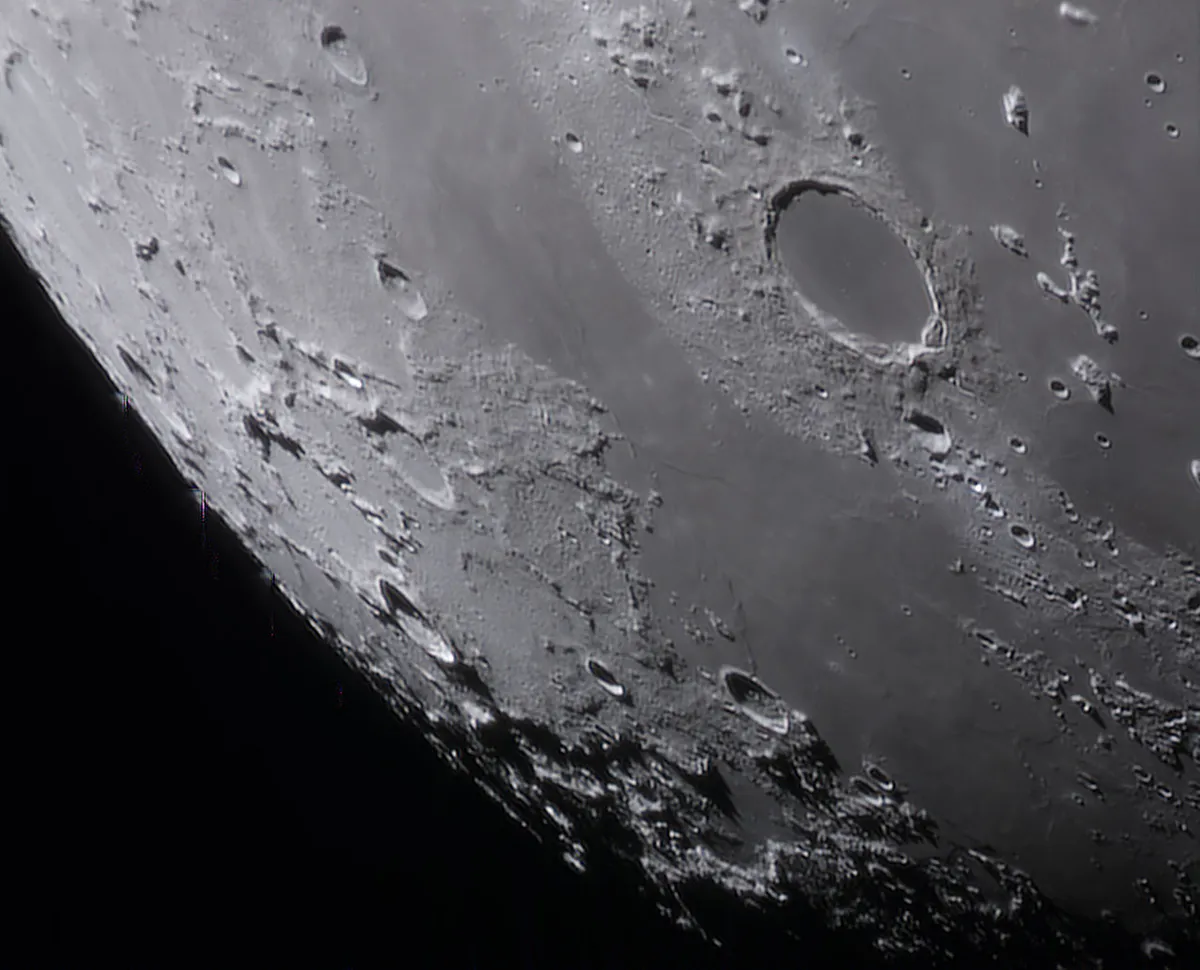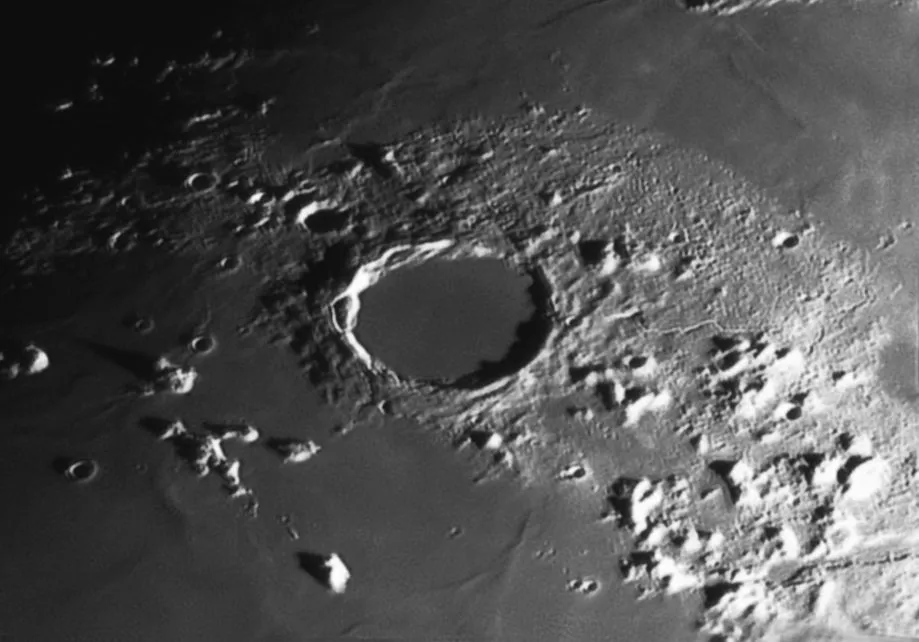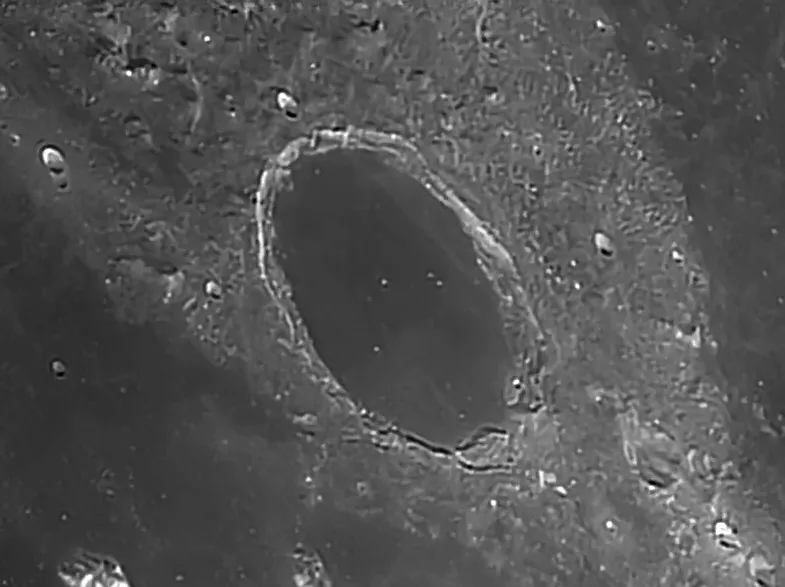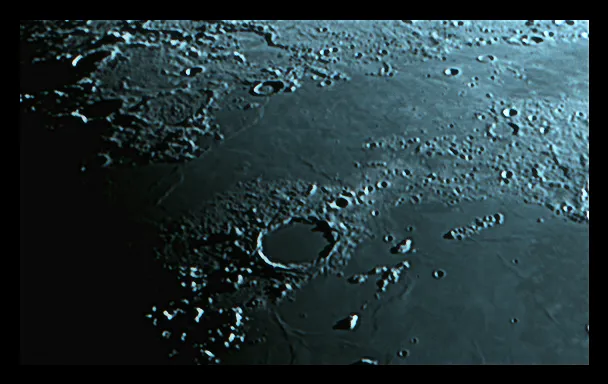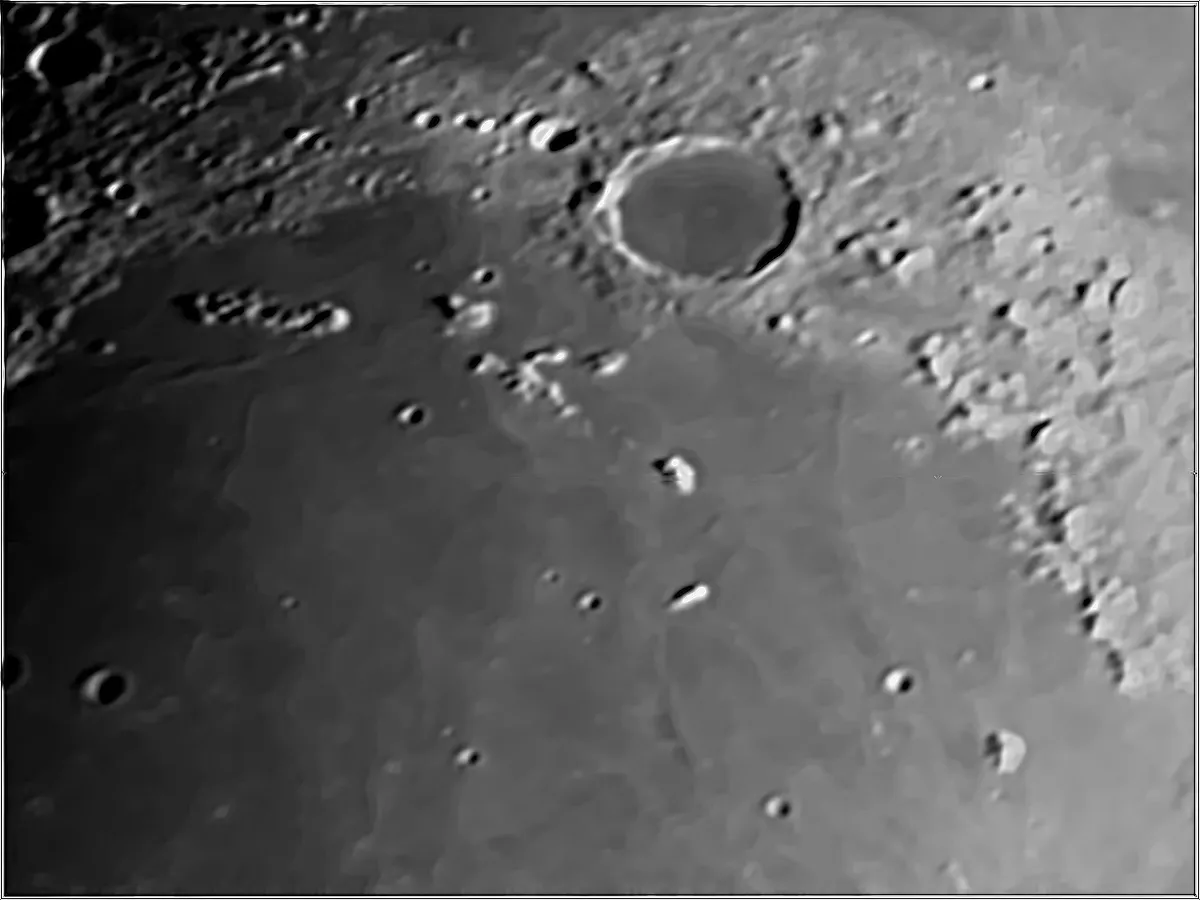Plato, lying in the Alpine region between the Mare Imbrium and the Mare Frigoris, is one of the most perfect of all the lunar craters.
Since it lies less than 10º from the central meridian, it is well placed during each lunar cycle: it comes into view soon after a quarter Moon.
It is almost perfectly circular, though foreshortening makes it appear decidedly elliptical. Its floor is iron-grey and rivals Crater Grimaldi for being the darkest point on the Moon.
When Grimaldi is also on view, it is interesting to compare them. Grimaldi is usually the darker of the two – but not always.
Between Mare Imbrium and Plato Crater you'll find the spectacular Montes Teneriffe.
For more info on lunar observing, read our guides on how to observe the Moon and the best features on the Moon.
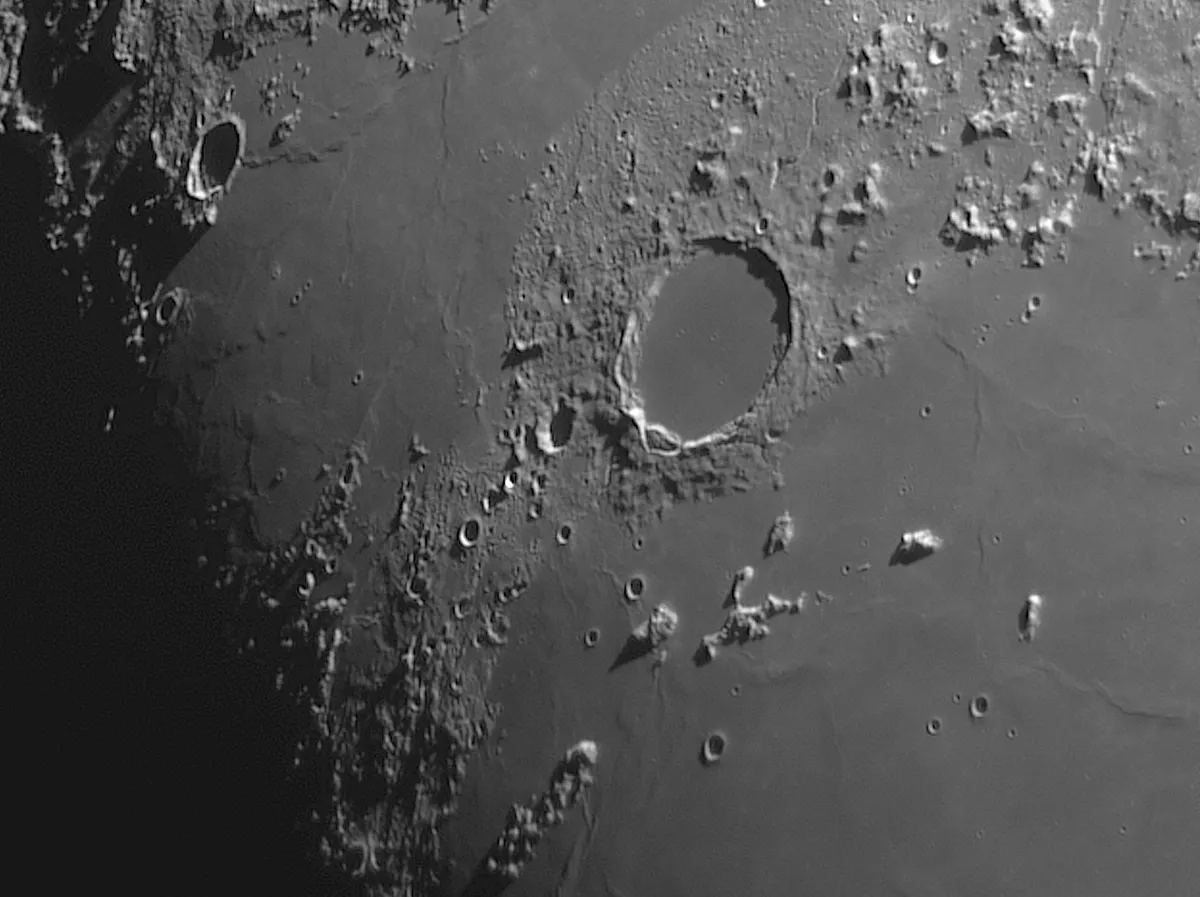
Facts about Plato Crater
- Size 109km
- Age 3.8 billion years
- Location: Latitude 51.6°N, longitude 9.3°W
- Recommended observing equipment: 6-inch telescope
What does Plato Crater look like?
In one of the earliest lunar maps – by Johannes Hevelius – Plato was called ‘The Greater Black Lake’, and it’s easy to see why the early Moon mappers thought that it must be filled with water.
Plato’s dark floor and regular shape make it easy to identify in binoculars (it is often forgotten that binoculars can show an amazing amount of lunar detail). Look for it whenever it is sunlit, and you should be able to find it with no trouble.
See if you can spot the clair-obscur effect known as Plato's Hook, which is caused when rim shadows inside the crater appear hook-shaped shadow. For info on how to find it, read our guide to the best clair obscur effects to see on the Moon.
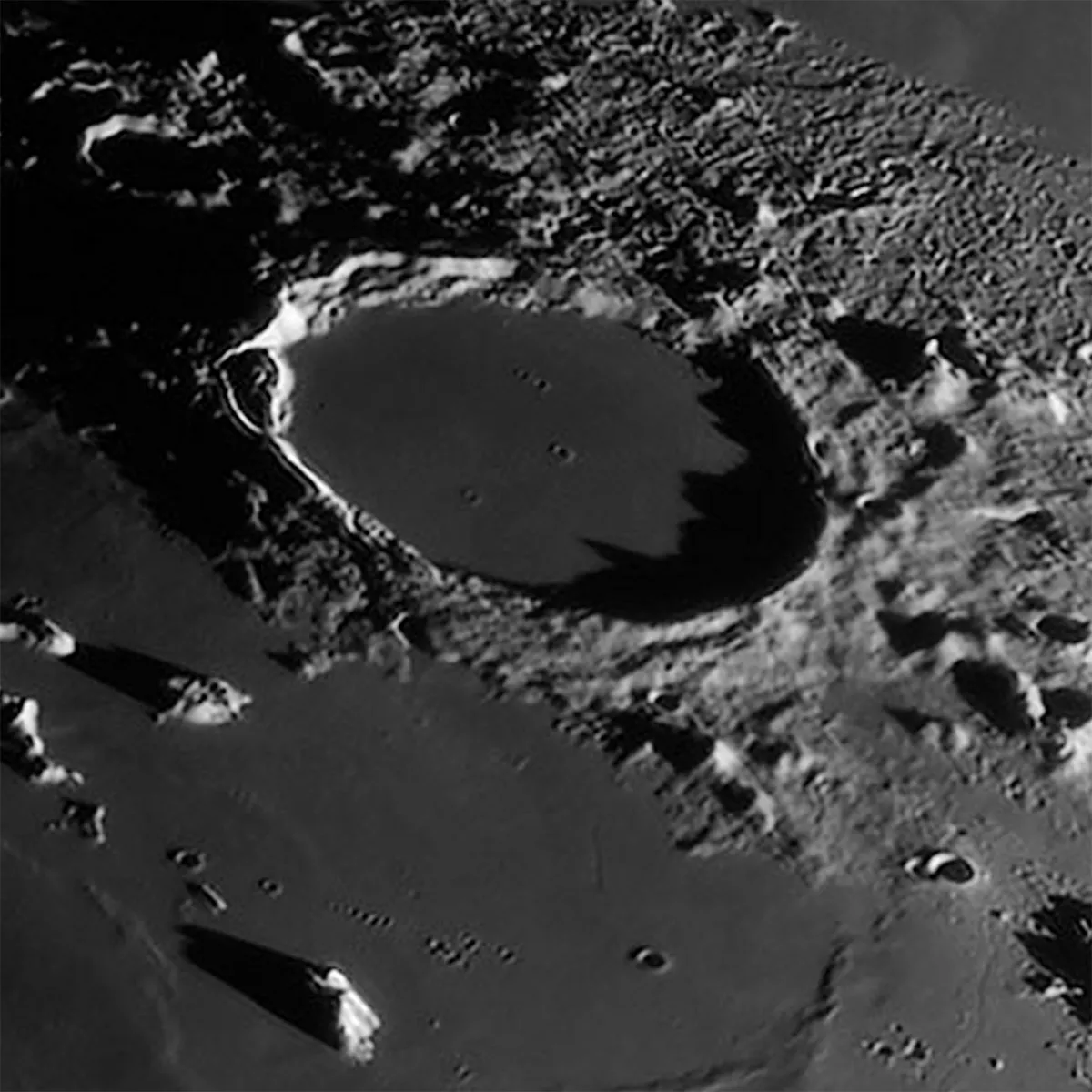
Plato Crater is named after the great philosopher of ancient Greece and is thought to be about 3.8 billion years old, rather younger than the Mare Imbrium.
A large ‘ghost crater’ lies to the south, between Plato and the prominent mountain Pico: to the west is the prominent 19km crater formerly known as Plato A, but now (at my suggestion) officially renamed Bliss after the fourth Astronomer Royal.
Plato’s rather low rampart includes several peaks at least 2km high, which cast long shadows across the crater floor when the Sun is at a low angle.
The floor itself has no trace of a central peak and there are no large craterlets, but there are various small craterlets which show puzzling changes in visibility.
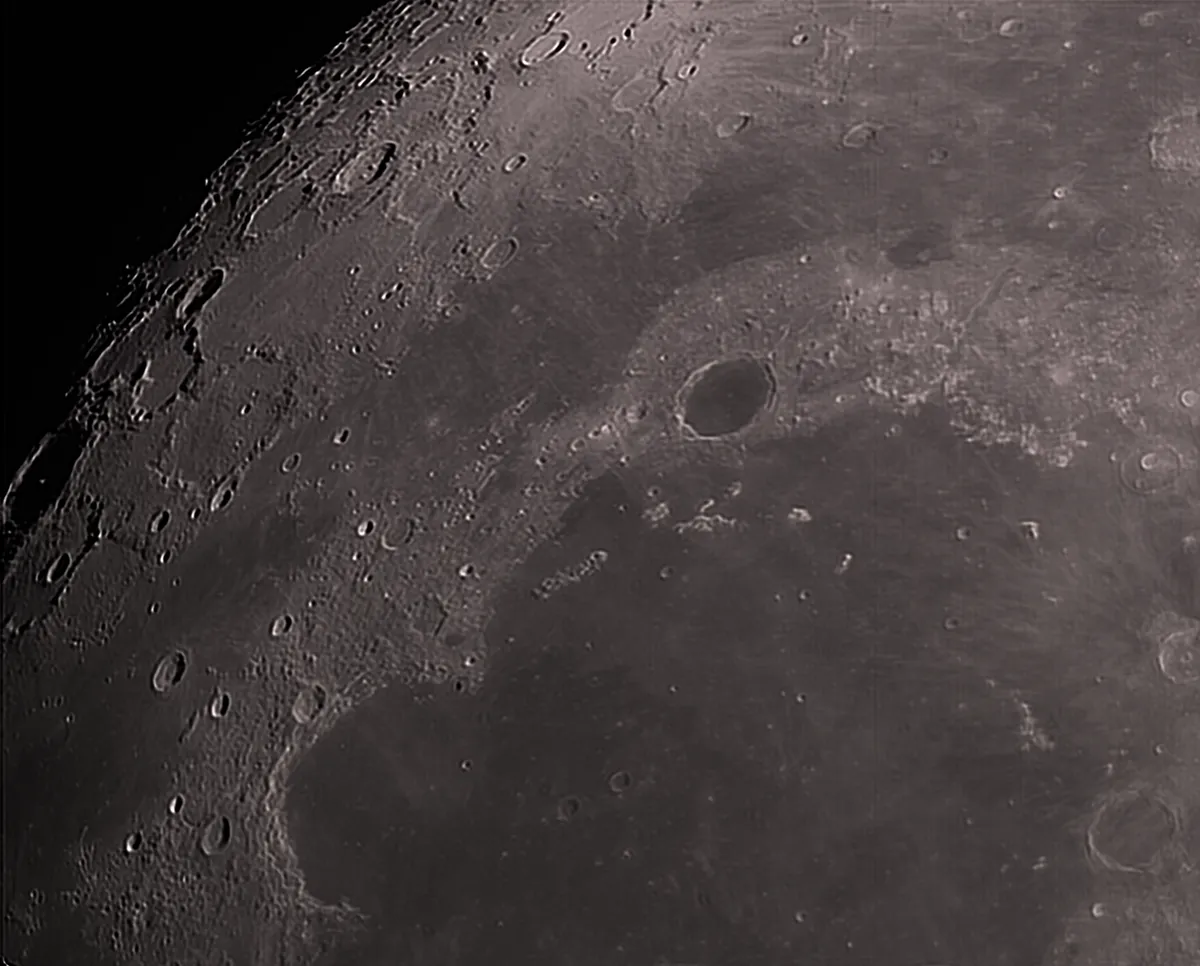
I have been observing Plato for over 60 years and find that some craterlets recorded as ‘obvious’ on some occasions are missed on others.
I remember using the 33-inch refractor at the Meudon Observatory, Paris, under excellent conditions in 1952. All details on the Moon were sharp, but Plato’s floor was blank.
Yet the next night, under similar conditions, several of the usual craterlets were seen.
There have also been reports of occasional ‘haziness’, and I and others have found that when Plato and Grimaldi are both in view, Plato occasionally looks the darker of the two.
No doubt most of these apparent variations are due to the changing angle of illumination, but they certainly are intriguing.

In 1954, the experienced observer FH Thornton, using an 18-inch reflector, recorded a distinct bright flash inside the crater.
A meteorite impact was suggested, but there was no subsequent sign of anything new in that position. An explanation for the flash has yet to be found.
Intriguing inconsistencies aside, Plato is, to my mind, one of the Moon’s most attractive showpieces. In the future, when lunar travel has become commonplace, it will no doubt become a tourist attraction.
However, a visitor standing near the middle of the crater will have no feeling of being shut in: Plato is the shape of a very shallow saucer.
The walls are certainly not steep and a centrally-placed observer will be unable to see them at all – they will be well below his horizon.
Images of Plato Crater
Below is a selection of images of Plato Crater captured by lunar astrophotographers and BBC Sky at Night Magazine readers.
For more info, read our guide on how to observe the Moon or how to photograph the Moon. And see if you can tick off all the entries on our list of best features to see on the Moon.
If you do manage to photograph the Moon and its features, don't forget to send us your images or share them with us via Facebook, Twitter and Instagram.
